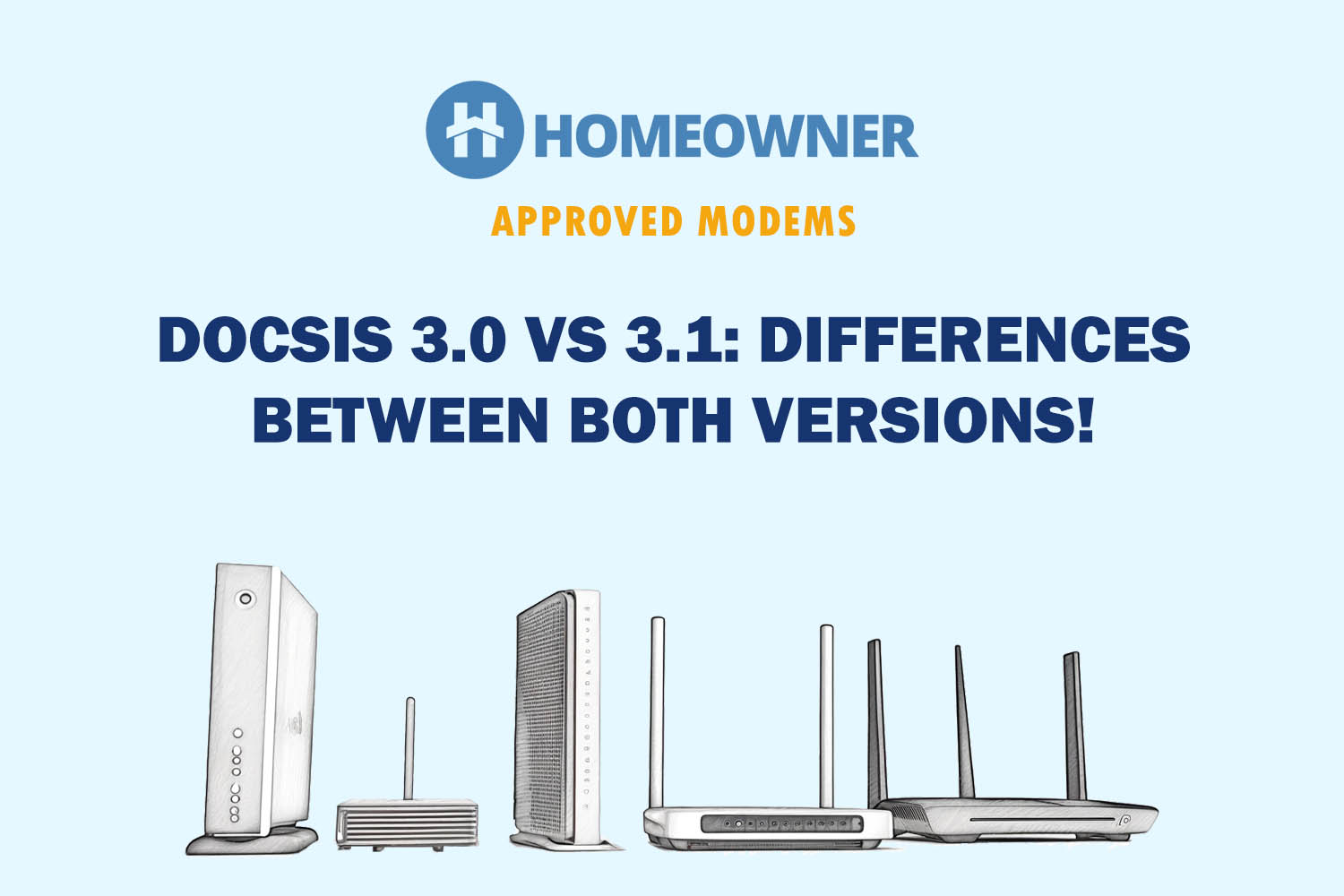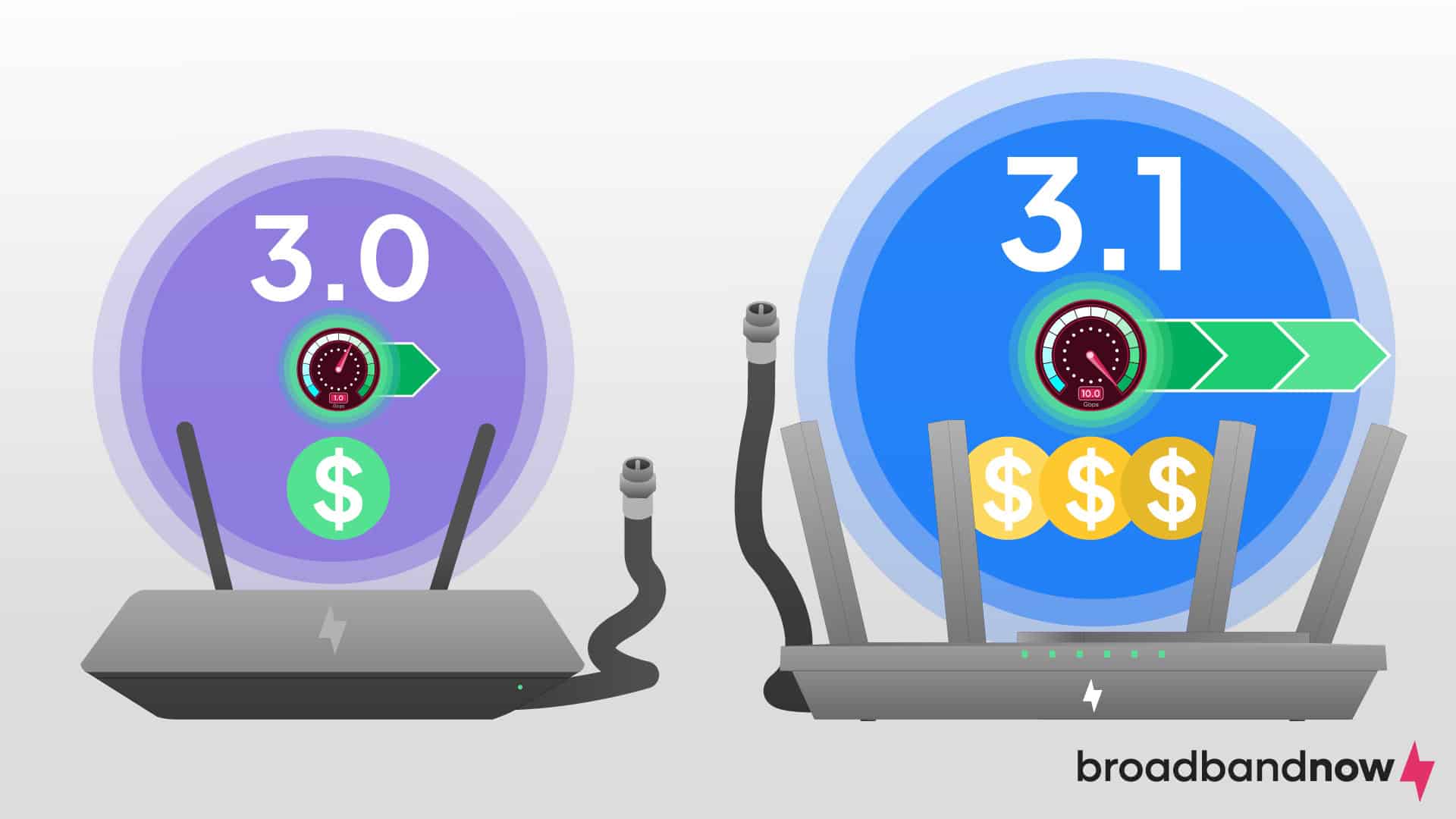DOCSIS 3.0 and 3.1 are standards for broadband internet. They impact your internet speed and efficiency.
Understanding the difference between DOCSIS 3. 0 and 3. 1 is crucial for making informed choices. DOCSIS, which stands for Data Over Cable Service Interface Specification, sets the standards for data transmission over cable TV networks. DOCSIS 3. 0, introduced in 2006, significantly improved internet speeds from its predecessors.
DOCSIS 3. 1, launched in 2013, brought even more enhancements, particularly in speed and efficiency. Knowing these differences helps you choose the best option for your internet needs. Whether upgrading your home network or setting up a new connection, this information is valuable. Let’s explore the key distinctions between DOCSIS 3. 0 and 3. 1 to help you decide.

Credit: lindsaybb.com
Introduction To Docsis
The term DOCSIS stands for Data Over Cable Service Interface Specification. It helps to deliver high-speed internet over cable TV systems. This technology is crucial for modern broadband services. DOCSIS has evolved over time to improve speed and reliability.
DOCSIS started with version 1.0 in 1997. It has advanced to 3.0 and now 3.1. Each version brought better speeds and performance. DOCSIS 3.0 supports up to 1 Gbps download speeds. DOCSIS 3.1 goes up to 10 Gbps. This means faster internet for users.
DOCSIS technology is vital for high-speed internet. It allows cable providers to offer faster services. With DOCSIS 3.0, users get good speeds. DOCSIS 3.1 offers even better performance. It supports more devices and higher bandwidth. This means a better online experience for everyone.

Credit: broadbandnow.com
Basics Of Docsis 3.0
DOCSIS 3.0 was launched in 2006. It allowed faster internet speeds for homes. Many internet providers adopted it quickly. This technology improved bandwidth significantly. Many households saw better internet performance. Adoption was widespread in a few years.
DOCSIS 3.0 supports speeds up to 1 Gbps. It uses channel bonding to combine multiple channels. This increases data rates. It also improves upload speeds. Security features were enhanced in this version. It supports IPv6 for better network management. This version is still used in many places today.
Advancements In Docsis 3.1
DOCSIS 3.1 came after DOCSIS 3.0. It offers faster speeds and better efficiency. More people use it now. Internet providers started using DOCSIS 3.1 quickly. This made internet connections better for many users.
DOCSIS 3.1 has many new features. It supports higher bandwidth. This means faster downloads and uploads. It uses better coding techniques. This helps to reduce errors. It also has low latency. This is good for online gaming and video calls. Another feature is energy efficiency. It uses less power.
Speed And Performance
Docsis 3.0 can handle speeds up to 1 Gbps. Docsis 3.1 supports speeds up to 10 Gbps. This makes Docsis 3.1 much faster. It is better for high-speed internet users. Docsis 3.0 is good for regular use. Docsis 3.1 is better for heavy internet activities. Such as streaming and gaming.
Docsis 3.1 has lower latency. This means less delay. It is more efficient. Docsis 3.0 has higher latency. It is less efficient. Docsis 3.1 uses OFDM technology. This improves performance. Docsis 3.0 uses older technology. It is not as efficient.
Network Capacity
DOCSIS 3.0 uses channel bonding to increase speed. Many channels are combined to create a large pipeline for data. This allows more data to flow at once. It is like having many lanes on a highway. More lanes mean less traffic and faster travel. This helps you get faster internet speeds.
DOCSIS 3.1 uses an extended spectrum for higher speeds. This means it can use more frequencies to send data. Think of it as having more radio stations. More stations mean more music choices. This helps send more data at once. Your internet can be faster and more stable.

Credit: www.homeowner.com
Technological Enhancements
DOCSIS 3.0 uses QAM for modulation. QAM stands for Quadrature Amplitude Modulation. It supports up to 256-QAM. DOCSIS 3.1 uses OFDM. OFDM stands for Orthogonal Frequency Division Multiplexing. It supports up to 4096-QAM. OFDM is better for speed and reliability.
DOCSIS 3.0 uses Reed-Solomon for error correction. This method is good but not the best. DOCSIS 3.1 uses LDPC for error correction. LDPC stands for Low-Density Parity-Check. LDPC is more efficient and improves data flow. Less errors mean better performance.
Impact On Service Providers
Service providers need to upgrade their networks. Docsis 3.1 is faster than Docsis 3.0. New equipment is needed for Docsis 3.1. This includes modems and routers. The upgrades can be complex and take time. Many cables may need replacement. Providers must plan and invest wisely. This ensures better service for customers.
Upgrading to Docsis 3.1 can be expensive. It needs new hardware and software. Providers must spend money on training staff. This ensures they can handle new technology. The costs can be high at first. But, better service can attract more customers. Over time, this can increase revenue. Proper planning can help manage costs.
Future Of Docsis
DOCSIS 3.1 is better than DOCSIS 3.0. It is faster and more reliable. It can handle more data. This means smoother streaming and quicker downloads. Also, it is great for gaming. It reduces lag. DOCSIS 3.1 is ready for the future. It supports new technologies.
Many companies are moving to DOCSIS 3.1. It is becoming the new standard. More devices can connect without slowing down. This is important for smart homes. It is also better for businesses. They need fast and stable internet. DOCSIS 3.1 meets these needs. It is a good investment for the future.
Frequently Asked Questions
What Is Docsis 3.0?
DOCSIS 3. 0 is a data over cable service interface specification. It offers internet speeds up to 1 Gbps. It is widely used by cable internet providers.
What Is Docsis 3.1?
DOCSIS 3. 1 is the latest cable internet technology. It supports speeds up to 10 Gbps. It offers improved performance and efficiency compared to DOCSIS 3. 0.
How Does Docsis 3.1 Improve Speed?
DOCSIS 3. 1 uses advanced modulation techniques. These techniques increase data transmission efficiency. It allows for higher internet speeds and better bandwidth management.
Is Docsis 3.1 Backward Compatible?
Yes, DOCSIS 3. 1 is backward compatible. It works with existing DOCSIS 3. 0 infrastructure. It ensures a smooth transition for service providers and users.
Conclusion
Understanding the differences between DOCSIS 3. 0 and 3. 1 is crucial. DOCSIS 3. 1 offers faster speeds and better efficiency. It’s suitable for heavy internet users. DOCSIS 3. 0 still works well for many households. Evaluate your needs and choose wisely.
Faster speeds can improve your online experience. Upgrading might be worth considering. Always check with your internet provider for compatibility. Making an informed decision helps you get the best performance. Stay updated with the latest technology. Your internet experience depends on it.
